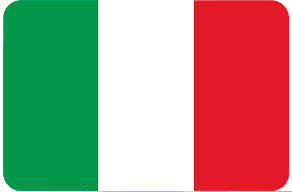
Il culto per San Nicolò risale all’XI secolo, quando fu trasportato il corpo del Santo da Myra, una città della Turchia, a Bari. L’impresa fu voluta dal priore Corbelli, originario da Cazoxana, nome con cui era identificato all’epoca il territorio di Mira.
Il primo edificio dedicato al santo risaliva al XII secolo, ed era situato all’incirca fra via Molinella e Cà Albrizzi, ma di questa costruzione purtroppo ci sono giunti solo pochi documenti.
Il culto per il santo rimase sempre vivo e nel XV secolo Benedetto Corbelli, ricco Padovano, probabile discendente del primo Corbelli, fece erigere, con il consenso di Papa Innocenzo VIII, un nuovo edificio nella zona fra Mira Taglio e Mira Porte in ricordo dell’antica costruzione ormai distrutta dalle guerre. A commemorare la benedizione della prima pietra vi è una lapide collocata nella parte sinistra della facciata.
La chiesa prese il titolo di “parrocchiale” e fu sottoposta alla pieve di Borbiago con la giurisdizione della famiglia Corbelli. Il primo parroco ad esercitare la propria fede fu Antonio Rossetto.
L’attuale costruzione si presenta molto diversa rispetto all’origine: l’edificio quattrocentesco presentava una facciata romanica con il protiro e il campanile incorporato nell’abside. Nel ‘600 la chiesa fu ampliata, furono aggiunte le due navate e realizzata una nuova abside. Nell’800 fu costruita la nuova facciata con elementi stilistici neorinascimentali. Il piccolo campanile fu sostituito da una nuova costruzione più alta e distaccata. Le variazioni maggiori furono apportate all’interno, soprattutto dalla seconda metà del ‘900, con la sistemazione degli altari, la sostituzione dell’antico organo e la chiusura di alcune porte. Durante il ‘900 si decise di demolire nuovamente il campanile, dichiarato pericolante, e di costruirne uno nuovo, inaugurato nel 1939.

The cult for San Nicolò dates back to the 11th century, when the body of the saint was transported from Myra, a city in Turkey, to Bari. The undertaking was commissioned by the prior Corbelli, a native of Cazoxana, the name with which he was identified at the time. the territory of Mira.
The first building dedicated to the saint dated back to the 12th century, and was located roughly between Via Molinella and Cà Albrizzi, but unfortunately only a few documents survive from this construction.
The cult for the saint always remained alive and in the 15th century Benedetto Corbelli, a rich Paduan, probable descendant of the first Corbelli, had a new building built in the area between Mira Taglio and Mira Porte, with the consent of Pope Innocent VIII remembering the ancient building now destroyed by wars. To commemorate the blessing of the first stone there is a plaque placed on the left side of the facade.
The church took the title of "parish" and was submitted to the parish of Borbiago with the jurisdiction of the Corbelli family. The first parish priest to exercise his faith was Antonio Rossetto.
The current building is very different from the origin: the fifteenth-century building had a Romanesque facade with the porch and the bell tower incorporated into the apse. In the 1600s the church was enlarged, the two naves were added and a new apse was built. In the 19th century, the new facade was built with neo-Renaissance stylistic elements. The small bell tower was replaced by a new, higher and detached building. The major changes were made to the interior, especially from the second half of the 1900s, with the arrangement of the altars, the replacement of the ancient organ and the closure of some doors. During the 1900s it was decided to demolish the bell tower again, which was declared unsafe, and to build a new one, inaugurated in 1939.

